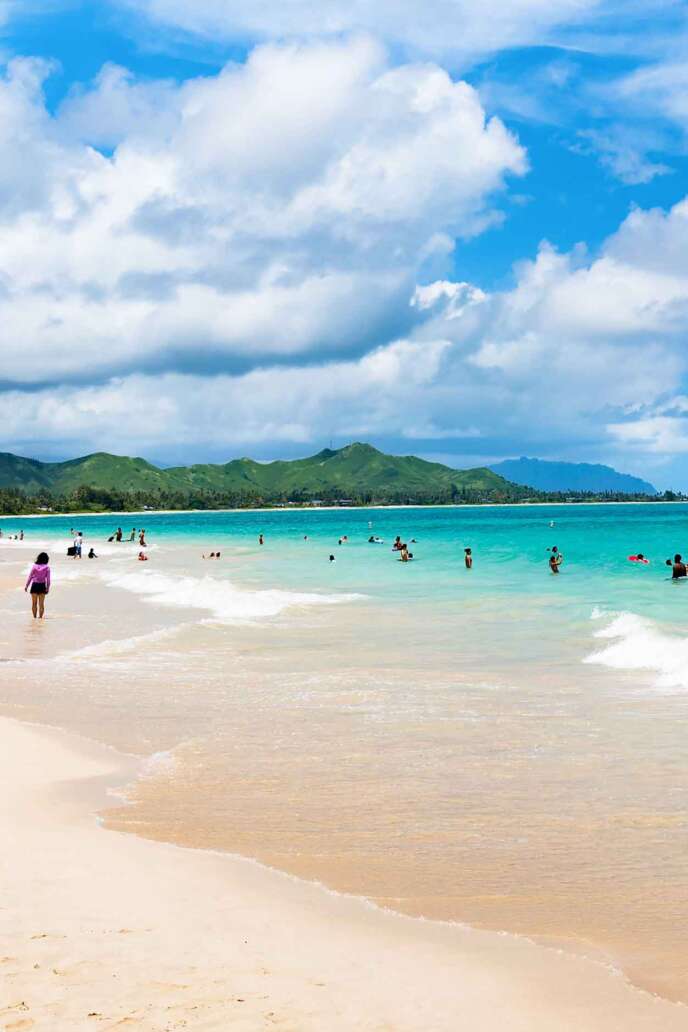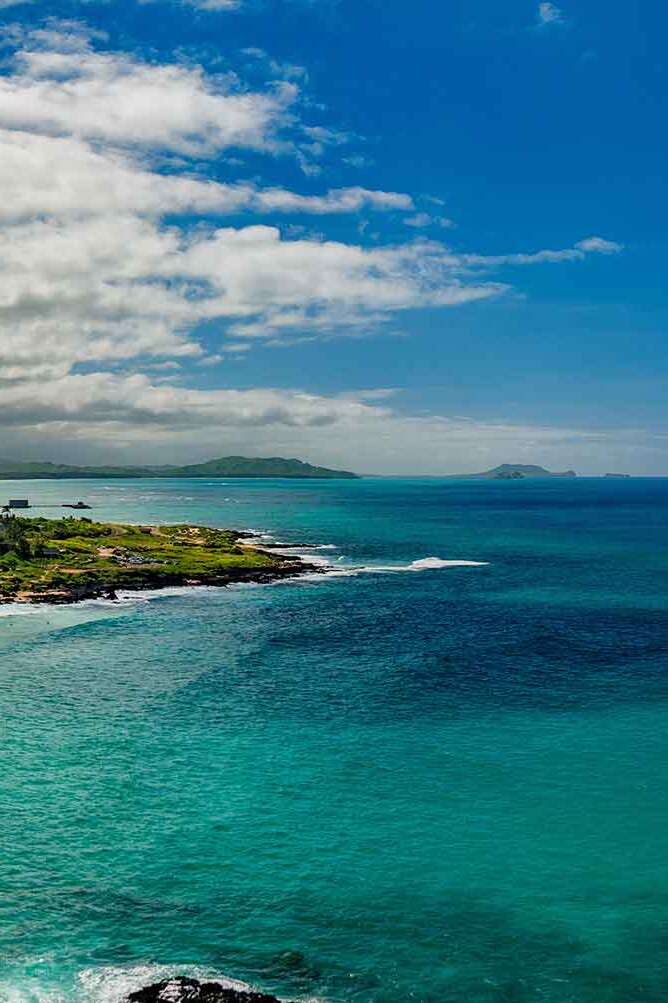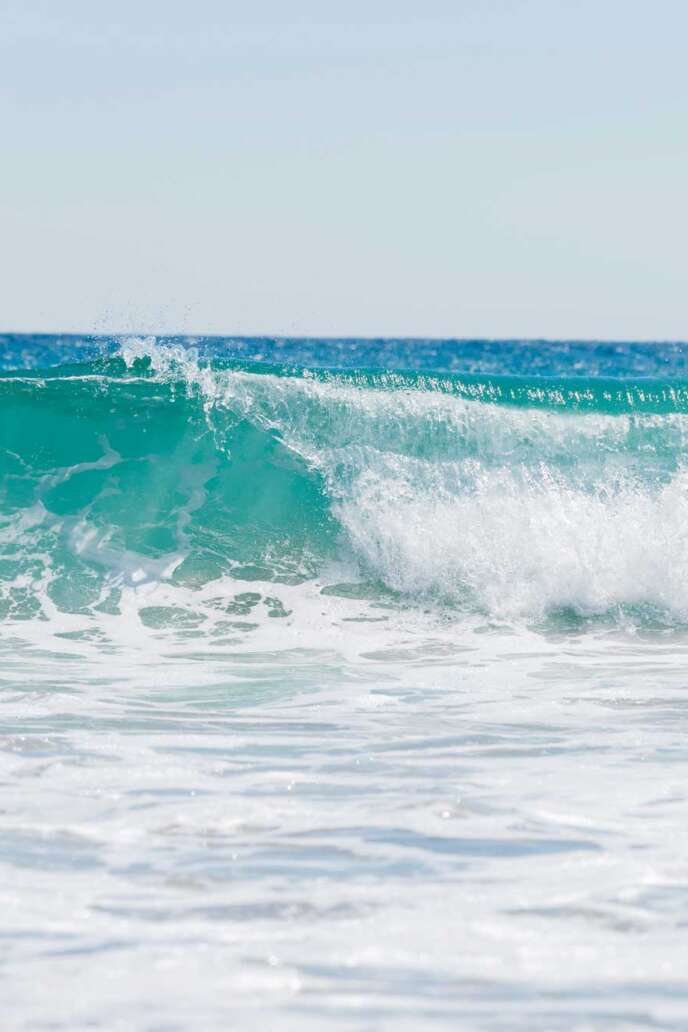Tucked away on the west coast of Oahu, Hawaii, lies the hidden gem that is Waianae. This tranquil paradise, far removed from the bustle of Honolulu, boasts pristine beaches, rich cultural heritage, and untouched natural beauty. Its scenic mountains and crystal clear waters offer an immersive experience of raw Hawaii, making it the perfect getaway for those in search of an authentic, less commercialized Hawaiian experience.
Highlights
- Waianae is a hidden gem on the west coast of Oahu, Hawaii, far removed from the commercialized tourism of Honolulu.
- It has a rich cultural heritage and untouched natural beauty, featuring pristine beaches and scenic mountains.
- Visitors can enjoy hiking in the Waianae Mountain Range, snorkeling at Makaha Beach, or indulging in traditional Hawaiian cuisine.
- The area is a paradise for wildlife enthusiasts, with opportunities for spotting spinner dolphins, green sea turtles, and humpback whales.
- Waianae also offers a range of cultural events and festivals, providing insight into local traditions and hospitality.
- Accommodation options range from luxury beachfront resorts to intimate bed and breakfasts.
History
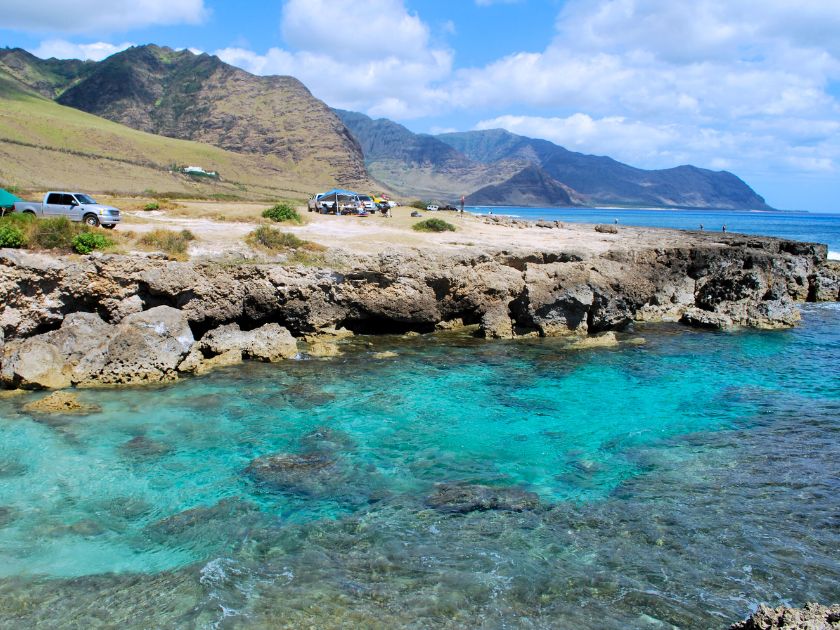
The Waianae Coast, named after the large mullet that used to be farmed here, has a rich history tied to its indigenous traditions and natural resources. The abundance of water, reflected in the name “Wai,” combined with the presence of a large mullet gave rise to its unique identity. These mullet were plentiful in the brackish-water pools, called muliwai, which were once common along Waiʻanae’s beaches. In the late 1600s to the 1700s, the Waiʻanae Ahupuaʻa, located within the Waiʻanae District, served as the Royal Center of the area. This ahupuaʻa was home to numerous important heiau, or sacred sites, and had the largest population in the district at the time of European contact. Before the arrival of Captain James Cook in 1778, the population of Waiʻanae was estimated to be between 4,000 to 6,000 people, showcasing the significance of this coastal community in Hawaiian history.
In 1820, Christian missionaries wasted no time in establishing missions throughout Oahu. One of their own, Stephen Waimalu, became the first Hawaiian minister of Waiʻanae in 1850. Before the 1880s, the Waiʻanae coastline remained largely untouched, following the natural contours of the land. However, the arrival of horses, cattle, and wagons in the nineteenth century led to the widening and grading of many coastal trails. But it was sugar that would shape the future of Hawaii. With the passing of the treaty of reciprocity in 1876, sugar could be imported into the United States duty-free, leading to huge profits. In 1888, Benjamin F Dillingham obtained a franchise to build a railroad along the Waianae coast, ultimately connecting Honolulu, Kaena Point, Waialua, and Kahuku. This new rail line brought limited development to the Waianae coast. The arrival of World War II brought significant changes to Waianae. The military claimed some of the best sugar lands, signifying the decline of the Waianae Plantation, which ultimately closed in 1946-1947. The railroad was left abandoned. However, The Hawaiian Railway Society stepped in to save the day and now takes care of the tracks. While they are only maintained up to the Nanakuli area, the tracks, and trains have become a popular tourist attraction.
Today, Waianae, Hawaii remains a hidden gem, largely untouched by the commercial tourism that pervades other parts of the archipelago. This beautiful coastal town, nestled between the majestic Waianae mountain range and the azure Pacific, offers a serene retreat for those seeking solace in nature. Its picturesque beaches, rich cultural heritage, and warm locals make Waianae a destination that truly encapsulates the soul of Hawaii.
Things to Do
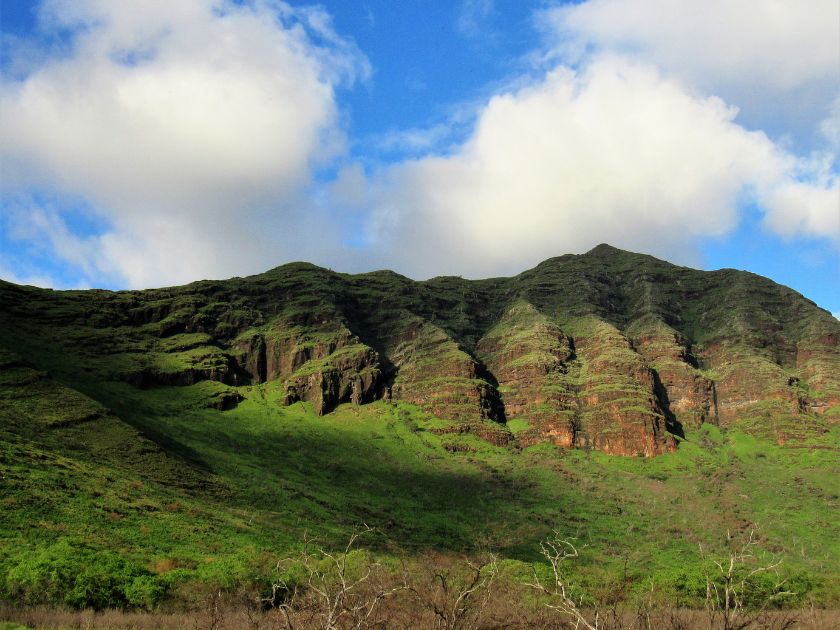
Hiking
The Waianae Mountain Range is a renowned spot for adventure enthusiasts, with its rugged hiking trails delivering panoramic views of the island. The valleys are teeming with endemic flora and fauna, presenting a chance for unique wildlife spotting. The Waianae Mountain Range, stretching along the western side of Oahu, creates a dramatic backdrop for the small town of Waianae. This mountainous region offers a selection of trails that will lead you through a myriad of landscapes, from lush rainforests to arid plains dotted with rare endemic plant species. The Waianae area is rich with a network of hiking trails that cater to all levels of experience, from the casual walker to the seasoned trekker. The trails wind through diverse landscapes, offering magnificent views and close encounters with the unique local flora and fauna.
One of the most famed trails is the Kamaileunu Ridge Trail. This challenging hike takes you up the ridge, offering panoramic views of the island and the vast Pacific Ocean. The trail is steep and rugged in parts, but the breathtaking scenery more than compensates for the effort. The Mauna Lahilahi Trail offers a more leisurely experience, with its short distance and relatively easy terrain. It’s a perfect trail for a family hike, with stunning coastal and mountain views. For those seeking a real challenge, the Mount Ka’ala Trail is a must-try. As the highest peak on Oahu, this trail takes you through a diverse array of landscapes, including lush tropical rainforests and rocky outcrops. At the summit, you’re rewarded with a 360-degree view of the island – the ultimate photographer’s dream. These mountains are also rich in historical significance, with ancient heiau (temples) and petroglyphs often found along the trails. Remember to respect the environment while hiking, keeping the trails clean, and preserving the natural beauty of Waianae.
Enjoy Activities on Waianae Beaches
On the coastline, the pristine Waianae Beaches cater to both relaxation and thrill-seekers. Waianae’s coastline is graced with some of the most stunning beaches in Hawaii. The clear blue waters and golden sands of Makaha Beach are renowned for their beauty, providing a perfect backdrop for swimming, sunbathing, and surfing. Surfing is undoubtedly a big draw, with Makaha Beach being a famed spot for its perfect waves. Whether you’re a seasoned pro or a first-time surfer, the varied breaks ensure there’s something for everyone. The beach also hosts numerous surfing competitions, drawing surf enthusiasts from across the globe. For those who prefer a more leisurely experience, stand-up paddleboarding at Pokai Bay Beach promises tranquil moments on the placid waters. The bay’s calm conditions make it an ideal spot for beginners to try this relaxing sport.
Snorkeling is another popular activity in Waianae. Kea’au Beach’s secluded coves are teeming with vibrant marine life, offering an enchanting world beneath the surface to explore. You might even spot Hawaiian Green Sea Turtles or spinner dolphins during your underwater adventure. Lastly, for an adrenaline rush, jet skiing, and parasailing are also available, offering thrilling ways to experience the beautiful Waianae coastline. Regardless of your preference, Waianae’s varied water sports offerings ensure a memorable Hawaiian aquatic adventure. Each Waianae beach holds its allure, offering visitors a unique chance to immerse themselves in the paradise that is Hawaii.
Wildlife Spotting
Waianae, teeming with a diverse range of habitats, is a paradise for wildlife enthusiasts. The azure waters surrounding the island serve as a home to a multitude of marine species, with spinner dolphins, green sea turtles, and the majestic humpback whales sighted frequently. Snorkeling trips in the region often come with the added thrill of spotting these fascinating creatures. On land, the Waianae Mountain Range harbors a plethora of endemic species. Bird watchers can delight in spotting the native Hawaiian Honeycreepers, Red-crested Cardinals, and the endangered Pueo, or Hawaiian Short-Eared Owl, among others. The lush mountain trails are also ideal for observing a variety of indigenous insects and plant species, making every hike in Waianae a journey of discovery.
Indulge in Traditional Hawaiian Cuisine
Waianae offers an authentic taste of traditional Hawaiian cuisine, characterized by a hearty fusion of Polynesian, Asian, and American flavors. One must-try dish is poi, a staple made from taro root, often paired with laulau, where pork wrapped in taro leaves is steamed to perfection. Poke bowls are another popular choice, featuring cubes of raw, marinated fish (usually tuna) served atop a bed of rice. For dessert, nothing beats the tropical sweetness of haupia, a coconut milk-based dessert that is both creamy and refreshing. Visitors can explore numerous local eateries and food trucks scattered across Waianae, each serving their unique renditions of these classic dishes.
In addition, the vibrant farmer’s markets in Waianae are a treasure trove of fresh fruits, vegetables, and local delicacies, providing a glimpse into Hawaii’s rich agricultural traditions. Dining in Waianae is not just about savoring great food; it’s about experiencing the aloha spirit and the cultural melting pot that is Hawaii.
Participate in Cultural Events and Festivals
Waianae is not just about its natural beauty; it also offers a rich cultural experience through its various festivals and events. The annual Waianae Coast Sunset on the Beach is a popular family-friendly event that combines open-air cinema, live music performances, and food stalls showcasing local Hawaiian cuisine. Another major highlight is the Waianae Coast Keiki Spring Fest, which offers a day of fun and games for children, accompanied by local music and hula performances.
For those interested in the rich cultural heritage of Waianae, the Makahiki Festival is a must-attend event. Held annually between October and February, this ancient Hawaiian festival celebrates the end of the harvest season with traditional games, music, hula, and much more.
If you’re a food enthusiast, be sure not to miss the Waianae Farmers Market. Held every Saturday, it’s an opportunity to taste the best of local produce, from fresh fruits and vegetables to homemade jams and baked goods. Visitors can also find beautiful handmade crafts, making it a vibrant community event that’s full of local character. These events and festivals in Waianae not only entertain but also provide an insight into the vibrant local culture, ensuring an enriching Hawaiian experience.
Accommodations in Waianae
When choosing accommodations in Waianae, consider your travel needs and preferences. For travelers seeking ultimate relaxation and luxury, opt for the beachfront resorts with their top-tier amenities and breathtaking ocean views. If you’re after a more authentic and intimate experience, consider the bed and breakfasts that offer a taste of local hospitality and culture. Families or larger groups might find the additional space of a vacation rental or cottage more suitable. Be sure to check for facilities like kitchen amenities, proximity to local attractions, and child-friendly services if you’re traveling with kids.
Waianae is home to some top-notch hotels and resorts that promise a luxurious and memorable stay. The Makaha Valley Towers is a top-rated resort in the area, offering a breathtaking view of the Makaha Valley from its high-rise apartments. The resort also boasts a heated swimming pool, BBQ grills, and 24-hour security. Another luxury accommodation is the Marriott’s Ko Olina Beach Club which, although located a bit further from Waianae, offers stunning oceanfront villas, three outdoor pools, seven whirlpool spas, and a comprehensive fitness center. For those who prefer a more intimate atmosphere, the Makaha Beach Cabanas offers beachfront condos with a private balcony, a fully equipped kitchen, and access to a secluded beach. Ultimately, regardless of where you choose to stay, the tranquil spirit of Waianae will ensure a memorable visit to this beautiful corner of Oahu.
Tips for Visiting
- Plan your visit during the dry season (April to October) to enjoy the outdoor activities Waianae offers, such as hiking the Waianae Mountain Range or lounging on its breathtaking beaches.
- Book accommodations in advance, especially if you’re planning to visit during the peak tourist season.
- Try the local Hawaiian cuisine. Many restaurants in Waianae offer traditional dishes that are worth trying.
- Don’t forget to bring your sunscreen and beach gear. Waianae is known for its beautiful sunny weather and pristine beaches.
- Consider renting a car for easier transportation. Public transportation exists, but having a vehicle can make your travels more convenient.
- Lastly, respect the local culture and environment. Remember that you are a guest in Waianae, so treat the place with kindness and respect.
Frequently Asked Questions (FAQs)
Waianae is known for its stunning natural beauty, encompassing majestic mountains and beautiful beaches. It’s a popular destination for outdoor enthusiasts who enjoy hiking and snorkeling.
In Waianae, you can enjoy various outdoor activities like hiking in the Waianae Mountain Range, snorkeling at Makaha Beach, or simply soaking up the sun in the numerous parks and beaches.
With its laid-back lifestyle, natural beauty, and friendly community, Waianae is generally considered a great place to live, particularly for those who appreciate a slower pace of life and a close connection to nature.
Waianae typically enjoys a tropical climate, with warm temperatures throughout the year. The area sees a fair amount of rainfall, but also plenty of sunny days perfect for outdoor activities.
Waianae is located on the west coast of Oahu, the third-largest of the Hawaiian Islands. It’s approximately 30 miles northwest of Honolulu.
Waianae is generally considered safe, with a sense of community amongst the locals. However, just like any other place, it has its own challenges. It’s always recommended for visitors to be aware of their surroundings, avoid isolated areas especially at night, and secure their belongings. Local authorities are committed to maintaining the safety and security of residents and tourists alike. Remember, your safety largely depends on taking sensible precautions.
How to Get There
By Car
To reach Waianae by car from Honolulu, you’ll want to head west on Interstate H-1. Continue on I-H1 which will slightly turn right and become I-H201 (signs for Interstate H201 West). After 1.4 miles, use the right 2 lanes to take exit 19B for Interstate H1 W toward Pearl City. Merge with I-H1 and keep left to stay on I-H1. After 11.5 miles, take exit 8A for HI-93 W/Farrington Hwy. Continue on HI-93 W. After 14 miles, you will reach Waianae.
By Bus
To reach Waianae by bus from Honolulu, take Bus Route 40 or 42 from the Ala Moana Center. Both buses will take you to Farrington Hwy opposite Princess Kahanu Ave, the heart of Waianae. These buses run regularly, but it is always best to check the local schedules for precise timing.
By Boat
Alternatively, you can also reach Waianae by boat. The Waianae Harbor is one of the most active harbors on the Leeward Coast and is open to the public. Be aware that it does not have a passenger ferry service, so this option is mainly for those with access to a private boat.
Let Waianae Be Your Next Travel Destination!
Waianae, a hidden gem on the island of Oahu, should undoubtedly be your next travel destination. This tranquil paradise is renowned for its untouched natural beauty and warm local culture. A visit to Waianae isn’t just a holiday – it’s a unique opportunity to immerse yourself in the rich Hawaiian culture, offering deep connections with nature and a chance to rejuvenate your soul.


